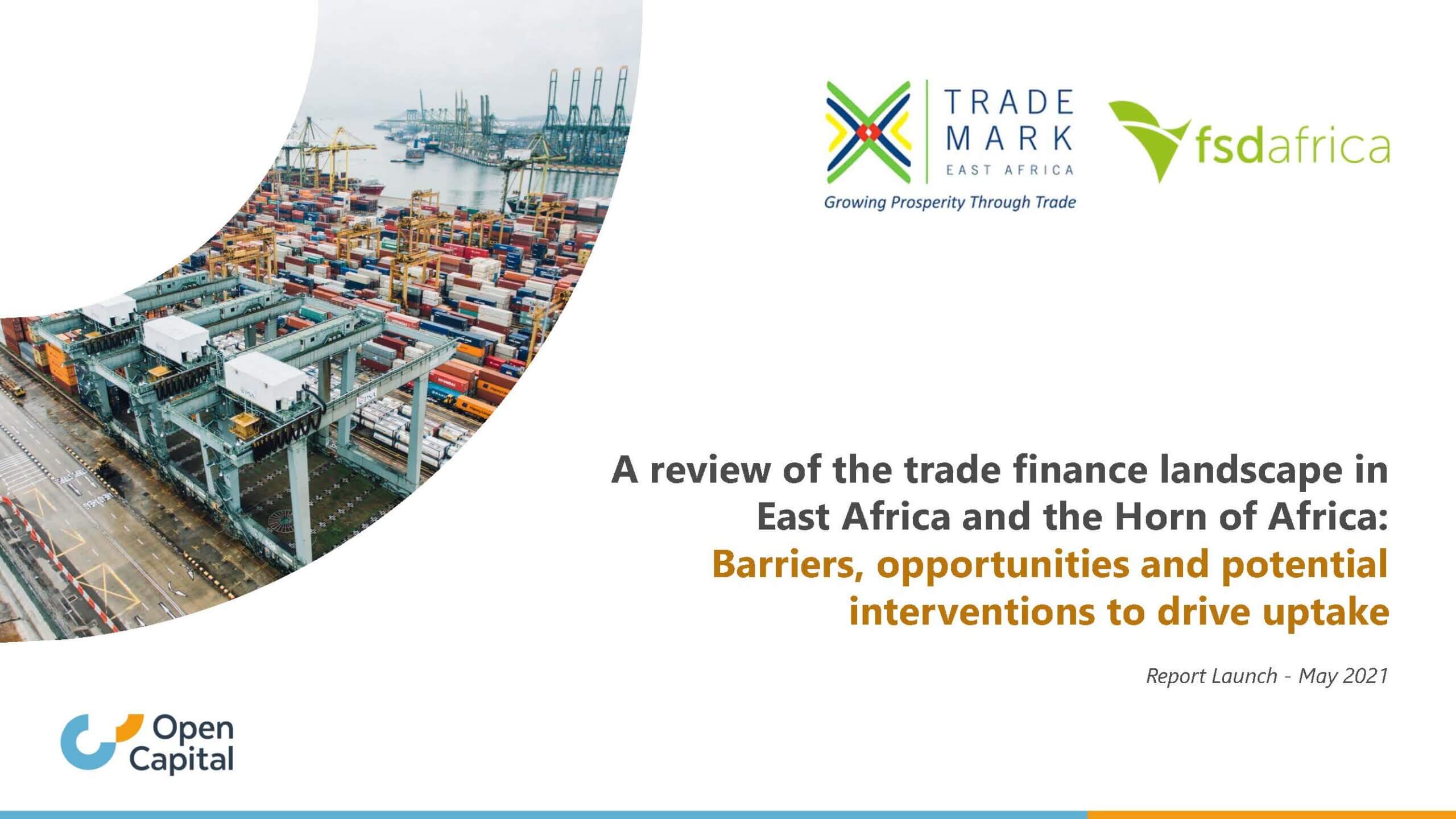TradeMark E.A and FSD Africa have partnered to launch a ground-breaking report on the trade finance landscape in East Africa and the Horn of Africa region. The report titled ‘Trade Finance Landscape in East Africa and Horn of Africa: Barriers, opportunities& potential interventions to drive uptake’ has highlighted limited access to trade finance as a key barrier hindering the region from playing a more significant role in global commerce. Whereas Africa comprises for 17% of the global population for instance, it only accounts for just 1.8% of global trade exports and 2.1% of global trade imports as per 2018 data. Of all sub-regions of the continent, East Africa continue to post the lowest total export trade in goods and services compared to other sub-regions, demanding concerted actions by all actors.
Speaking during the launch of the report TradeMark CEO Frank Matsaert noted that the report provided a good starting point in tackling key challenges limiting the regions performance in global trade ‘The low intra-regional trade in Africa is because trading activities across the continent are inhibited, For SMEs in particular by limited access to finance but also due to high export costs, political instability, poor infrastructure and high taxation’ he observed.
The study focussed on three priority sectors namely, agriculture, construction and textiles& garments and found key barriers to uptake exist both at ecosystem and trade finance provision level, underscoring the importance of holistic interventions for meaningful impact.
FSD Director for Credit Markets Jared Osoro, called for a comprehensive address of the bottle necks holding back the region’s access to trade finance, ‘Barriers to trade finance uptake exist at both eco-system and trade finance level. A joined-up and well-sequenced approach in addressing both the broader ecosystem challenges affecting trade and those undermining the growth of trade finance has the potential to deliver meaningful and sustainable impact’ he said.
In Agriculture, the regions’ economic mainstay high collateral requirement& pricing, limited instruments tailored for agriculture SMEs, few risk mitigation instruments and lengthy approval processes were noted as leading barriers denying SMEs in the sector the much-needed trade finance.
For the Construction sector, limited awareness of available trade financing options, stringent trade finance terms, limited instruments for Construction SMEs, delayed payments from key sector clients such as governments were identified as leading stumbling blocks starving the sector’s SMEs the trade finance lifeline.
Related challenges were identified in the textile and garments sector, where a combination of high collateral requirements, limited suitable trade finance instruments, limited awareness of the few trade financing options available and limited risk mitigation instruments were the leading impediments blocking access to finance.
Regionally Kenya was found to have the highest trade finance gap estimated at US$ 2.8 B driven by larger trading volumes given the size of the economy. Uganda’s gap estimated at US$ 0.9 B was relatively lower on the back of a smaller economy and with banks unwillingness to lend the agricultural sector being the main challenge. Ethiopia had a limited gap of US$ 2.1B driven by limited forex, as demand outweighs supply due to low export commodity prices and infrastructure projects taking the bulk of existing reserves. Tanzania recoded the lowest trade finance gap at US$ 0.9B on the back of low demand as many SMEs lack knowledge on trade finance instruments and rely on traditional financing.
The report has proposed a raft of measures to enhance provision of trade finance to regional SMEs in the select sectors among them,
- Creation of a revolving fund to address high risk perception especially in light of the Covid19 pandemic to support importers struggling with foreign currency shortage, by helping them access hard currency to import essential items.
- Technical assistance to banks to support warehouse financing by training banks of risk assessment, discounting of warehouse receipts and facilitating creation and integration of warehouse receipt registries with bank systems to help with registration and management.
- Technical support to banks to help them structure receivables-backed finance schemes using different types of security at different stages of the value chain.
- Technical support to banks to help them develop tailored factoring and reverse factoring solutions and a structure approach to identification of Fin-techs who can serve as intermediaries for processing reverse factoring transactions would improve uptake of these solutions.
- Support provision of partial risk guarantee facilities to cover government obligations would boost investor confidence.
ENDS.
Download file














